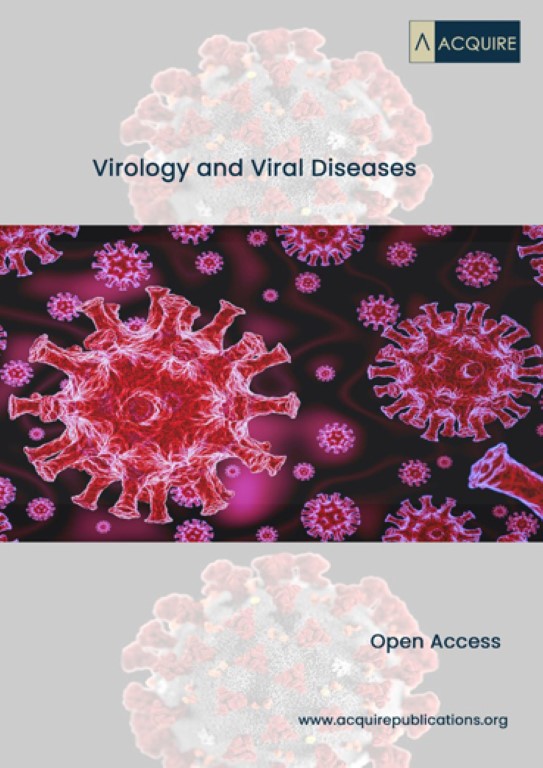>Corresponding Author : Michel Leclerc
>Article Type : Research Article
>Volume : 2 | Issue : 1
>Received Date : 11 January, 2022
>Accepted Date : 20 January, 2022
>Published Date : 23 January, 2022
>DOI : https://doi.org/10.54289/JVVD2200102
>Citation : : Leclerc M. (2022) Hla-E Gene from Ophiocomina Nigra (Echinodermata-Invertebrates). Bioinformatics Data. J Virol Viral Dis 2(1): doi https://doi.org/10.54289/JVVD2200102
>Copyright : © 2022 Leclerc M. This is an open-access article distributed under the terms of the Creative Commons Attribution License, which permits unrestricted use, distribution, and reproduction in any medium, provided the original author and source are credited.
Research Article | Open Access
Immunology of Invertebrates, 556 Rue Isabelle Romée, 45640 Sandillon France
*Corresponding author: Michel Leclerc, Immunology of Invertebrates, 556 Rue Isabelle Romée, 45640 Sandillon France
Abstract
HLA-E gene from MHC system has been recently discovered, in our laboratory, in Invertebrates. Blasts were performed against different species to find or not homologies. Results were given in the precedent communication.
Introduction:
In 2020, we discovered for the first time, MHC genes in Invertebrates and particularly in Echinodermata [1, 2]. More recently, in 2022 a biosynthesis of HLA-E (ClassI, MHC) gene from O.nigra was performed [3]. The aim of this work is to analyse HLA-E DNA sequence.
Material and Methods:
Starting material: dna sequence of HLA-E transcriptome:
TGTAATCCCAGCACTTTGGGAGGCCGAGGCGGGCGGATCACGAGGTCAGGAGATCGAGACCATCCTGGCTAACACAGTGAAACCCCGTCTCTACTAAAAATACAAAAAATTAGCCGGGCGTGGTGGCGGGCGCCTGTAGTCCCAGCTACTCGGGAGGCTGAGGCAGGAGAATGGCGTGAACCCGGGAGGCGGAGCTTGCAGTGAGCCGAGATCGCGCCACTGCACTCCAGCCTGGGCGACAGAGCGAGACTCTGTCTCAAAAAAAAAAAAAAAAAAAAAAA
Results and conclusion
1. Blastn original sequence:
Database: Standard databases were used
We also optimize for: Highly similar sequences (megablast)
We recall that Molecule type is dna
Its query length is 281
We find more than 100 sequences producing significant alignments
First results appear in the table below:
Table 1
| Description | Scientific name | Max score | Total score | Query cover | E. Value | Per. Ident | Acc Len | Accession |
|---|---|---|---|---|---|---|---|---|
| Pan troglodytes chromosomes unknow clone CH251-153M19, complete sequence | Pan troglodytes | 514 | 9982 | 100% | 2e-141 | 99.64% | 184578 | AC280142.1 |
| Pan troglodytes BAC clone CH251-501A13 from chromosomes unknow, complete sequence | Pan troglodytes | 514 | 10636 | 100% | 2e-141 | 99.64% | 181275 | AC185293.4 |
| Homo sapiens clone RP11-92L24 from 2 from chromosomes unknow, complete sequence | Homo sapiens | 514 | 2329 | 100% | 9e-141 | 99.64% | 137248 | AC019051.8 |
| Eukaryotic synthetic construct chromosome 13 | Homo sapiens | 508 | 1.314e+06 | 100% | 9e-140 | 99.29% | 96089878 | CP034516.1 |
2. Blastn original sequence: The Molecule type is again dna with a query length of 281
The Database which is used consists in: Non-redundant protein sequences (nr)
We obtain more than 100 sequences producing significant aligments
The table is recapitulated as following in Table 2:
Table 2
| Description | Scientific name | Max score | Total score | Query cover | E. Value | Per. Ident | Acc Len | Accession |
|---|---|---|---|---|---|---|---|---|
| Hypothetical protein EGM_09670 [Macaca fascicularis] | Macaca fascicularis | 149 | 149 | 91% | 1e-44 | 91.86% | 89 | EHH59533.1 |
| hCG2030582 [Homo sapiens] | Homo sapiens | 135 | 135 | 90% | 5e-39 | 83.53% | 102 | EAW48014.1 |
| Low quality protein: histone demethylase UTY [Chlorocebus sabaeus] | Chlorocebus sabaeus | 129 | 219 | 91% | 7e-36 | 87.50% | 166 | XP_037863302.1 |
| hypothetical protein CRU82_14500 [Staphylococcus aureus] | Staphylococcus aureus | 124 | 124 | 71% | 7e-35 | 92.54% | 72 | PGG78133.1 |
Conclusion:
Results summarized in the 2 tables show homologies between the Ophiocomina nigra HLA-E gene and various proteins issued from Staphylococcus aureus to human Chromosome 13 which is sometimes implicated in human trisomy We note also a strong homology with Macaca fascicularis.: 91,86% of identity.
Mainly we retain that O.nigra HLA-E gene exists in” its own right” and in its amplification in plasmid [3].
References:
- Leclerc M. (2020) Evidence of MHC Class I and Class II Genes in Echinodermata. 2(1): 59-61. [Ref.]
- Leclerc M. (2021) Biosynthesis « De Novo » of the Ophuirid Ophiocomina Nigra Igkappa Gene.1(1): 1-4. [Ref.]
- Leclerc M. (2022) Ophuirid Ophiocomina Nigra HLA-E Gene Synthesis in PUC-GW-KAN Plasmid or HLA-E Echinodermata Gene Biosynthesis « De Novo » in E. Coli Sensu Lato Plasmid. J Virol Viral Dis 2(1). [Ref.]
